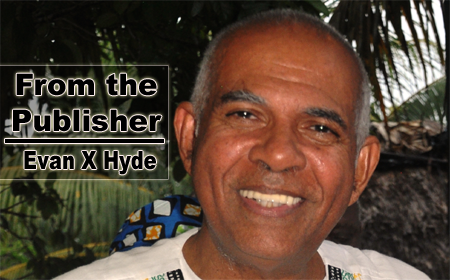When the University of Belize (UB) was formally opened in August of 2000, yours truly was the chairman of the board. The university was/is an amalgamation of five different institutions—the University College of Belize (UCB), the Belize Teachers College, the Bliss School of Nursing, the Belize Technical College, and the Belize School of Agriculture.
The UB board was comprised of perhaps 12 to 14 individuals who represented the five institutions and other relevant bodies, such as the University of the West Indies (UWI), the Belize Chamber of Commerce, St. John’s College, and so on. (I believe I was replaced as UB chairman in the earlier part of 2004.)
Almost twenty-two years later, I am disappointed at how invisible UB is where high-level public discourse on critical issues is concerned. Because I was chairman of the UB board for those years to which I referred earlier, I know why the situation is the way it is, or I believe I do. The academics at UB are repressed by the Government of Belize, whether UDP or PUP, because GOB does most of the UB’s funding, and the piper, whether red or blue, calls the tune.
I dare to suggest, at this point, that Sandra Coye and Ya Ya Marin Coleman do more high-level academic work, all on their own, without any funding, than all the academics and students at UB.
All over so-called Latin America, universities are cauldrons of intellectual debate and dissent, and I know that the Belizean government during my time as chairman, a People’s United Party (PUP) government, was determined that UB should not spawn any such activist turmoil.
I am reminded of the early 1980s when the Government of Belize, a PUP one, had decided to “Belizeanize” the command of the Belize Defence Force, which had been established in 1978. For those of you younger readers, it is important to mention that for its first few years, the BDF command was in the hands of Englishmen.
I was living on First Street (King’s Park) in the early 1980s when the BDF’s Charles Good, a Captain if I remember correctly, came to see me. He lived just a few blocks away from me. Captain Good was in an agitated state, because the PUP government had decided to recruit Tom Greenwood from the Belize Volunteer Guard section of the BDF and send him to Sandhurst for special training in order for him to assume command of the BDF as our army’s first Belizean leader.
It was clear to all and sundry that the logical choice for Belizean command at the time would have been Captain Good, but I was sure that Belize’s political leaders had been warned by the British to be very careful of any Belizean commandant who was too respected by, and popular with, the BDF’s rank-and-file. Such was my personal perspective. So I told Charlie that the PUP government was afraid of him, which was why they were jumping Greenwood over him.
So then, politicians are afraid of armies, and they are afraid of universities. Straight up. This is my thesis.
As a result of Belizean politicians’ fear of their universities, some very important research is “outsourced.” It is practically ridiculous. One classic example was the Jamaican anthropologist, Dr. Herbert Gayle, Ph. D., being hired by Belize to do research on Belize’s gangs and gang neighborhoods. For sure, Dr. Gayle is something special, but, all things being equal, this should have been a job for a Belizean.
I have said to you before that I felt I was mis-educated in Belizean schools, which I attended from 1952 to 1965. I was never taught about the Caste War in Yucatan. I was never taught about the 1919 uprising in Belize Town. I resented my mis-education deeply, and I therefore rebelled. For this rebellion, I have been severely disciplined by Belize’s power structure.
Well now, the same thing is being done, has been done, all over again over the last half-century to the students of Belize. No research has been done on an event which I believe is critical to understanding Belize’s history since self-government.
For a period of roughly two years, between 1971 and 1972, something extraordinary had taken place. A fusion across party political lines had taken place amongst young people in the old capital/population center—Belize City. Looking back now, I can see that such a fusion was, almost by definition, quite fragile, because the basis of Belize’s socio-politics is a two-party system, where the Belizean people are divided by the emotionalism of party personality politics.
The reason 1971 and 1972 are important to research is because the young people in that same old capital/population center have been slaughtering each other for more than three decades now, and no one can really figure it out, or let’s put it another way, no one can offer a solution which comes anywhere near to working.
If it is that some people somewhere wish for such a suicidal/genocidal process to exist and to continue, then this deal is so big it is mindboggling.
I have come to the conclusion that any solution to this disaster has to come from the Belizean diaspora, come hell or high water. For now, I will say again, the academics of Belize have refused to acknowledge that something important happened on May 29, 1972. They have done the same thing their colonial predecessors did to the events of July 22 and 23, 1919. Those events just didn’t happen. They were figments of someone’s imagination. Today, ignorance is blood.

